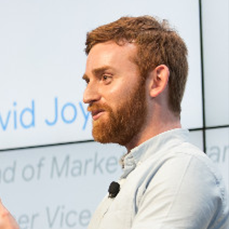As part of our ECI Unlocked programme we recently welcomed David Joyson, Chief Customer Officer at Avantia, the tech-enabled virtual insurer, to our Sales & Marketing Forum. He shared how Avantia have increased return on ad spend (ROAS) and his top secrets to getting there:
1. Focus on revenue, not just clicks and conversions
Your return on ad spend is only as a good as the data you are providing and getting out of your adtech. Most firms are on a digital marketing journey, and that means firms trying to improve the sophistication of that data. Most firms start that journey at manual bidding or cost per conversion, simply trying to get as many conversions as possible within their budget. One of the key secrets to increasing your ROAS is to enhance your data-driven maturity by focussing on revenue instead.

Most firms move from manual bidding and cost-per-click to start thinking instead about cost-per-acquisition. The problem with this is that it treats all acquisitions as equally valuable. It’s why firms should aim to move onto target return on ad spend. This metric measures the amount of revenue your business earns for each £ it spends on advertising. Because it treats each conversion as individual rather than taking an average, it allows you to invest more in ads where you are getting the most value.
2. Challenge simplistic forecasting models
What Avantia found when they were operating a Target ROAS model, is that they wanted it to be more sophisticated, i.e. with margin, lifetime value etc. A key early insight into their forecasting model was that the retail price paid by the customer didn’t correlate strongly with forecast lifetime value. In order to address this, they needed to provide better data and modelling. To increase ROAS they needed to forecast lifetime value, using factors such as cover type, retention propensity, and competition score (i.e., likelihood of winning the customer). All of this in a real-time bidding situation. By transitioning to a better quality forecasting model, they were able to get a truer reflection of which ads were delivering value.
3. Use machine learning to get greater accuracy in real time
Machine learning is what enabled Avantia to deliver on these aims of delivering a sophisticated ROAS with enhanced data. Avantia built their own microservice application, Marpod, which connected their historic data warehouse with Google ads, google analytics, google tag manager, as well as their own quote site, contact centre call data and on-site messaging service.
By connecting Google Ads with this enhanced decisioning platform, they could deliver real-time decisioning in paid search based off a more accurate customer LTV forecast. Marpod has delivered a significant uplift on Avantia’s ROAS and overall lifetime value. And now the machine learning tool is set up they can continue to test and improve their ad investment. If the model sounds impressive, it is! In fact, it led to the Avantia team being recognised at the Drum Digital Advertising awards last year for Best Paid Search Campaign.

As stated at the start of this piece, most firms are on a digital marketing journey. However, if you focus on revenue, the quality of your forecasting model, and ideally using machine learning to optimise your accuracy over time, you’ll be well on your way to increasing your return on ad spend.


